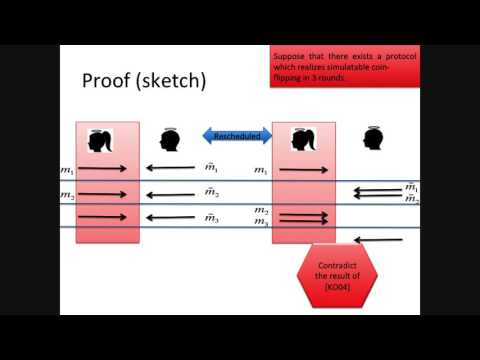Welcome to the resource topic for 2016/252
Title:
The Exact Round Complexity of Secure Computation
Authors: Sanjam Garg, Pratyay Mukherjee, Omkant Pandey, Antigoni Polychroniadou
Abstract:We revisit the exact round complexity of secure computation in the multi-party and two-party settings. For the special case of two-parties without a simultaneous message exchange channel, this question has been extensively studied and resolved. In particular, Katz and Ostrovsky (CRYPTO ‘04) proved that 5 rounds are necessary and sufficient for securely realizing every two-party functionality where both parties receive the output. However, the exact round complexity of general multi-party computation, as well as two-party computation with a simultaneous message exchange channel, is not very well understood. These questions are intimately connected to the round complexity of non-malleable commitments. Indeed, the exact relationship between the round complexities of non-malleable commitments and secure multi-party computation has also not been explored. In this work, we revisit these questions and obtain several new results. First, we establish the following main results. Suppose that there exists a k-round non-malleable commitment scheme, and let k’ = max(4, k + 1); then, – (Two-party setting with simultaneous message transmission): there exists a k’-round protocol for securely realizing every two-party functionality; – (Multi-party setting):there exists a k’-round protocol for securely realizing the multi-party coin-flipping functionality. As a corollary of the above results, by instantiating them with existing non-malleable commitment protocols (from the literature), we establish that four rounds are both necessary and sufficient for both the results above. Furthermore, we establish that, for every multi-party functionality five rounds are sufficient. We actually obtain a variety of results offering trade-offs between rounds and the cryptographic assumptions used, depending upon the particular instantiations of underlying protocols.
ePrint: https://eprint.iacr.org/2016/252
Talk: https://www.youtube.com/watch?v=vW2IHpyv4Hw
See all topics related to this paper.
Feel free to post resources that are related to this paper below.
Example resources include: implementations, explanation materials, talks, slides, links to previous discussions on other websites.
For more information, see the rules for Resource Topics .
